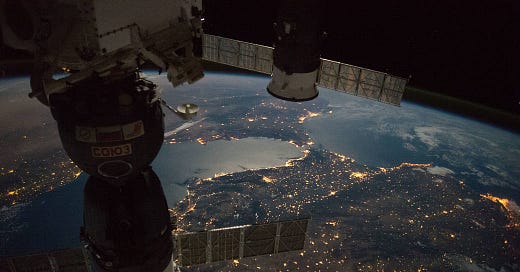Why did the last ice age end? explores Cameron Duke for Live Science."One of the big questions in my research field right now is why the last ice age ended," Brenda Hall, a glacial geologist and professor of Earth and climate sciences at the University of Maine.
Artificial Photosynthesis May Be Key to Sustained Life Beyond Earth, reports Singularity Hub. "Photosynthesis is such an integral part of Earth’s functioning that we pretty much take it for granted. But as we look beyond our own planet for places to explore and settle, it is obvious how rare and valuable the process is."
‘It’s not like science fiction any more’: NASA aiming to make spaceships talk--Researcher Dr Larissa Suzuki tells how Nasa is developing a ChatGPT-style interface, reports The Guardian. "Nasa engineers say they are developing their own ChatGPT-style interface that could ultimately allow astronauts to talk to their spacecraft and mission controllers to converse with artificial intelligence-powered robots exploring distant planets and moons."
New Evidence Suggests The Titanic Wasn't Just Sunk By An Iceberg, reports Senan Molony, an Irish author who’s written extensively about the history of the Titanic, points out that new pieces of evidence suggest that the much-famed demise was actually started by a fire, not ice.The new theory was put forward in the documentary "Titanic: The New Evidence", which aired on the UK’s Channel 4 on January 1.
Incredible facts about the Challenger Deep, the deepest point on Earth--The Challenger Deep, the deepest known point on Earth's underwater surface, plunges more than 36,000 feet down. That's nearly three times deeper than the site where the wreckage of the RMS Titanic lies in the Atlantic Ocean, and it's deeper than Mount Everest is tall.
Decades-long bet on consciousness ends, reports Nature. "Despite a vast effort — and a 25-year bet — researchers still don’t understand how our brains produce it, however. 'It started off as a very big philosophical mystery,' adds philosopher David Chalmers. 'But over the years, it’s gradually been transmuting into, if not a ‘scientific’ mystery, at least one that we can get a partial grip on scientifically.'"
If Humans Went Extinct, What Would The Earth Look Like One Year Later?--Have you ever wondered what the world would be like if everyone suddenly disappeared? reports IFL Science.
Humans' evolutionary relatives butchered one another 1.45 million years ago, reports Phys.org. ""The information we have tells us that hominins were likely eating other hominins at least 1.45 million years ago," said National Museum of Natural History paleoanthropologist Briana Pobiner. "There are numerous other examples of species from the human evolutionary tree consuming each other for nutrition, but this fossil suggests that our species' relatives were eating each other to survive further into the past than we recognized."
UFOs or not – something is up, reports Sean Thomas for The Spectator. "Bill Nelson, current head of NASA (when directly asked about UFOs in late 2021: ‘Who am I to say that planet Earth is the only location of a life form that is civilized and organised like ours?’ Avril Haines, the current Director of National Intelligence: ‘There’s always the question of “is there something else that we simply do not understand, that might come extra-terrestrially?”’
Our Unexplored Dark Universe–A European space telescope sets off to discover the nature of dark energy—the biggest ingredient in the universe, reports Science.
Can Humans Survive Long-Term in Deep Space? reports SciTechDaily. "The answer is a lukewarm maybe, according to a new theory that outlines the intricate challenges of maintaining gravity and oxygen, securing water, cultivating food, and managing waste while being distant from Earth. Dubbed the Pancosmorio theory – a word coined to mean 'all world limit' – it was described in a paper published in Frontiers in Astronomy and Space Sciences.
The human brain’s characteristic wrinkles help to drive how it works--A model of the brain’s geometry better explains neuronal activity than a model based on the ‘connectome’, reports Nature.
Curated by The Galaxy Report editorial staff.




